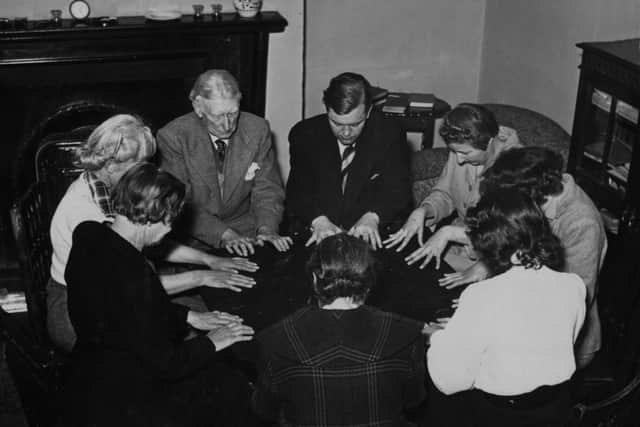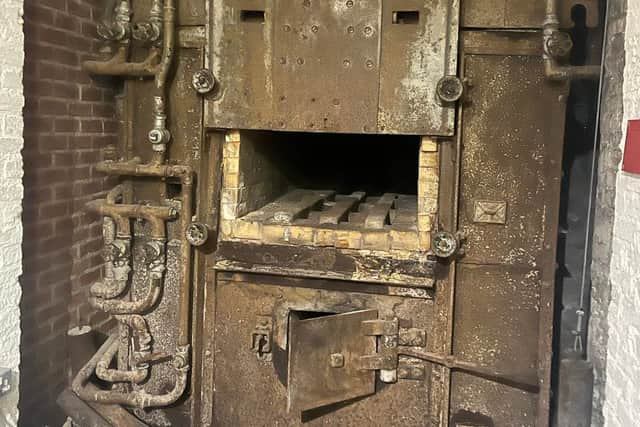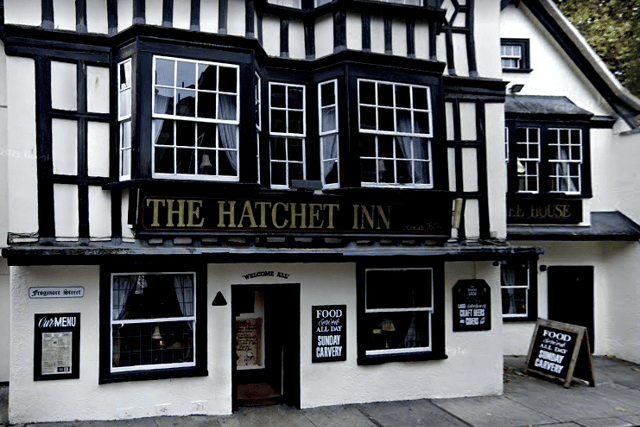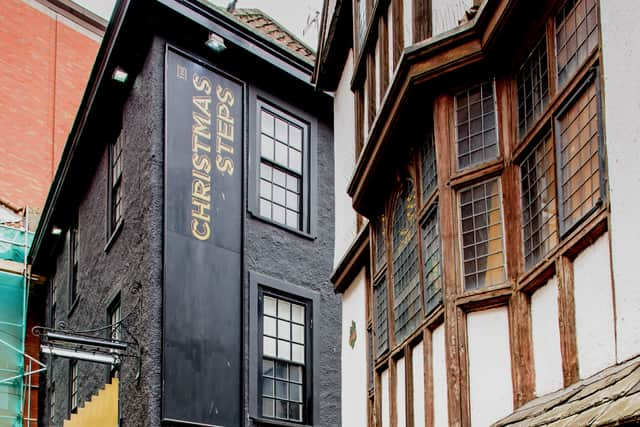Halloween 2022: Creepy facts about Bristol that will keep you up at night
and live on Freeview channel 276
Who doesn’t love a hair-raising tale around Halloween? For those with a penchant for the macabre, Bristol has scary stories and creepy facts aplenty.
Did you know that the city was once home to one of history’s most notorious female serial killers, or has gruesome items including an old cremation machine and a book bound in human skin on display within its museums?
Advertisement
Hide AdAdvertisement
Hide Ad

Here are some creepy facts about Bristol that will send shivers down your spine.
The city was home to one of history’s most prolific female serial killers
Amelia Dyer, dubbed one of the UK’s most prolific female serial killers in recorded history, was born in Bristol. She murdered hundreds of infants in her care over a 30-year-period during the 1800s. Dyer originally trained as a nurse before turning to baby farming - the practice of adopting unwanted infants in exchange for money - after she was widowed in order to support herself. Dyer initially cared for the children, and had two of her own, but a number of them went on to die in her care. She then began murdering children she ‘adopted’, strangling at least some of them before disposing of the bodies. She was discovered in 1896 when a bagged infant corpse was discovered in the River Thames, before being found guilty of murder and executed at Newgate Prison in 1896.
Some Bristolians have been plagued by an unexplainable ‘hum’ since the 1970s - and nobody knows what it is
Some people in Bristol say they are plagued by a strange low-level hum, but nobody has ever been able to explain what it is. The mysterious sound first surfaced in the 1970s, when hundreds of the city’s residents complained to the Council that the ‘hum’ was keeping them up at night. There are a number of theories about what it could be - most experts have put the sound down to factory noise, electricity pylons or tinnitus. But some creepier suggestions include secret military activity or flying saucers hovering over the city. Some residents still claim to hear ‘the Bristol hum’ to this day.
You can view a book bound in human skin on display at one of the city’s museums…
You read that right - Bristol is the keeper of a book bound in human skin, and you can even see the grisly artefact on display. The book, known as The Horwood Book, is bound in skin belonging to John Horwood who was the first criminal to be executed at Bristol New Gaol in 1821. Horwood was born in Hanham and came to notoriety following the death of a local girl, Eliza Balsom. Horwood was accused of throwing a stone at Eliza’s head, causing her death, after she ended a relationship between the pair. Horwood was just 18 when he was hanged after being found guilty of Eliza’s murder, and some of his skin was later tanned and made into a book by Dr Richard Smith. It is currently on display in the M Shed Museum. Horwood’s skeleton was actually kept in a cupboard at Bristol University until 2011, when it was buried alongside his father in Hanham. The coffin was draped in velvet and carried on a wheeled bier in the manner of elegant funerals of the period of Horwood’s death.
Advertisement
Hide AdAdvertisement
Hide Ad… as well as an original cremator at Arnos Vale Cemetery
Arnos Vale Cemetery, the resting place of over 300,000 people, is a working cemetery to this day after being saved from closure in the 1990s. A cremator well over 100 years old is on display at the site’s free exhibition underneath the Spielman Centre, along with a Victorian coffin cart. The crypt of the listed non-conformist chapel at the cemetery, off the Bath Road, also still holds the winch that lowered coffins, along with recycled railway tracks that carried them towards the furnace of one of the earliest crematoriums in Britain - and the first ever in the West Country. Fun fact - the first thing to be cremated at Arnos Vale Cemetery was a dead sheep. Cremation was only ruled legal in the 20th Century, when the forward-thinking Bristol General Cemetery Company installed a handmade furnace. To understand the new technology, an open day was held and a sheep was cremated. The cemetery no longer has working cremation furnaces, but people can still be scattered or buried on site.


Oh, and one of the city’s pub doors is also thought to be made out of human skin
The huge door of the Hatchet Inn in Frogmore Street is rumoured to be made from layers of human skin from executed criminals, although this has never been proven with the thick paint and tar layers never removed to find out. Thanks to a cheery ‘welcome all’ sign painted above the door, you’d never know. The Hatchet Inn is Bristol’s oldest pub, first licenced in 1606. The notorious Bristol pirate Blackbeard is rumoured to have once been a patron.


Bristol boasts countless ‘haunted’ buildings and streets
Bristol has a rich and at points dark history, so it’s no surprise that the city is thought to be frequented by all manner of ghosties and ghoulies - if you believe in that sort of thing. Here’s a list of the buildings and areas claimed to be the most haunted:
- Bristol Fire Station, Temple Back - Ghostly sightings at the fire station, built on top of an ancient Knights Templar garrison, include ‘odd characters’ milling around the building along with a shadowy figure the cook once chased out of the kitchen in the 1970s.


- Christmas Steps - The Christmas Steps is now a colourful, historic shopping street that makes up part of the Christmas Steps Arts Quarter - but it wasn’t always so. The site was once home to a gallows in the 1660s, and people walking towards Colston Street have reported the sound of a man screaming for his life.
- Pembroke Road - This pretty street in Clifton is thought to be haunted by the ghost of a highway man called John Prothroe. He used to rob people near this location in the 18th century and when he was eventually caught, he was hung on the site of his crimes and buried on the grass junction at the top of the road.
- All Saints Church - This historic building on Corn Street was built in the 12th century and also had a ‘ghost’ - thought to be that of one of the monks murdered by Henry VIII’s troops in the 16th Century. The monk is believed to have been protecting hidden valuables, which were never found, and air raid wardens in World War II claim to have seen him walking through the pews talking to himself.
- Llandoger Trow - This King Street pub was built in 1664 and is thought to be home to 15 ghosts. The most famous is a small boy with a metal leg support who walks the top floor. His footsteps have been heard by numerous staff over the years.
- The Highbury Vaults - Now one of Bristol’s most popular pubs, the Highbury Vaults has a dark past. In the 19th Century, it became an infamous spot for condemned prisoners to enjoy one last pint on their way to the gallows. Drinkers claim the pub is haunted by the spirits of these desperate souls.
Comment Guidelines
National World encourages reader discussion on our stories. User feedback, insights and back-and-forth exchanges add a rich layer of context to reporting. Please review our Community Guidelines before commenting.
